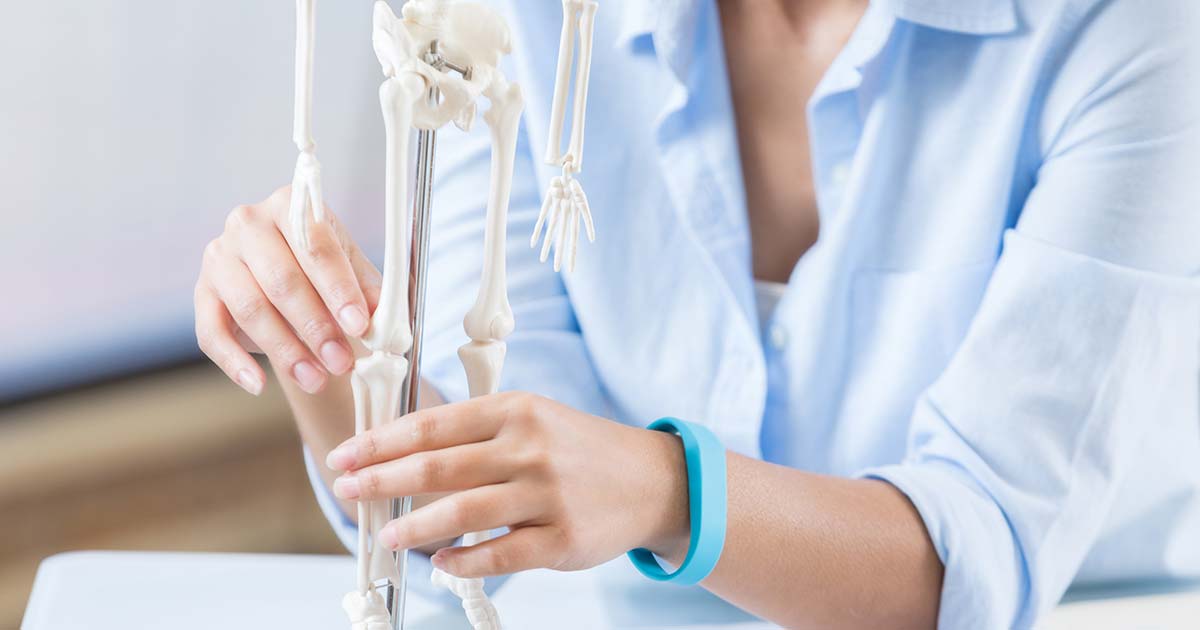Benefits of Strength Training for Women Throughout Life
Advice to improve your movement, fitness, and overall health from the world's #1 in orthopedics.
The basic principle of strength training is the same for everyone: Applying a load to a muscle that is heavy enough to cause the muscle to adapt will increase strength. Strength training builds better bones, keeps the joints in proper alignment, helps improve sports performance and reduces the risk of injury.

For women, strength training has unique benefits throughout life. Here, HSS physiatrist Ellen Casey, MD, and physical therapist Anna Ribaudo, PT, DPT, OCS, Capp-OB, share more on the benefits of strength training for women from youth to older age.
In Childhood and Adolescence
You might not think that osteoporosis is a concern in the early years, but the seeds of this disease—which affects three times as many women as men—are planted in childhood and adolescence. As much as 40% of total adult bone mass is achieved during puberty. This means that inadequate bone growth early in life will manifest itself in fragile, frail bones later on. Strength training is a powerful stimulant for bone growth, which makes it critical for girls and young women to strength train regularly.
Girls as young as 7 years old can perform strength training safely, using their own body weight, as long as they have adequate supervision and instruction, can follow directions and have the balance and control needed to perform exercises with good form. Developing strength and learning proper movement patterns will not only help with bone health but also enhance sports performance. Additionally, it may play a role in reducing the risk of sports-related injuries such as anterior cruciate ligament (ACL) tears, lateral ankle sprains and instability of the shoulders and knees.
In Pregnancy and Postpartum
For women who have children, there is now ample evidence of the many benefits of exercise during pregnancy. The most recent guidelines specifically recommend a variety of aerobic and resistance training activities, including muscle training for the pelvic floor.
Pregnancy places unique demands on the musculoskeletal system, which can require modifications to what type of exercises are done and how they are performed. Strength training for the core, the hips and the upper back and shoulders can help women adapt to their changing center of gravity as the pregnancy progresses. Unless there are complications and a woman has been advised by her doctor to avoid exercise, many women who were strength training prior to pregnancy can continue with their program through the first and into the second trimester. Further along in pregnancy, certain exercises may have to be modified to accommodate the growing fetus and the changing body. An exercise physiologist or a physical therapist with expertise in this area can develop a sound strength training plan during pregnancy—ideally to help avoid many of the common aches and pains pregnant women endure, as well as to speed postpartum recovery.
Training in the postpartum period also requires adjustments to account for the musculoskeletal changes associated with pregnancy and delivery. Many women have a separation in the abdominal muscles, called diastasis recti, which may need to be addressed before and during return to exercise and sports. The pelvic floor muscles may also require rehabilitation and regular training postpartum. Strength training during pregnancy and postpartum—safely, under the guidance of professionals—will not only help you manage the physical demands of pregnancy but will also restore core and pelvic floor strength that can last long afterward.
In the Post-Menopausal and Senior Years
You’re never too old to get stronger. What’s more, adequate strength is essential to remain active, live independently, and avoid falls. Since osteoporosis affects women more than men, and bone loss is accelerated after menopause, strength training is particularly important in older women. Beyond helping to maintain bone mass, strength training in the later years also improves quality of life by giving you the strength to support aging joints, maintain good posture, lift grandchildren, and continue to participate in any sports or activities that are a source of joy.
If you have osteoporosis, arthritis, cardiovascular disease, diabetes, or any chronic disease, it’s important to take these issues into account when designing your exercise plan. Get advice on proper form and progression from a physical therapist or clinical exercise physiologist before you start.
Published 5/30/2023




